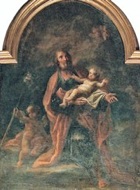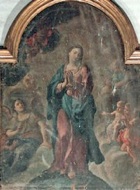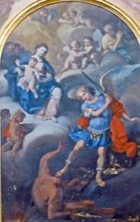

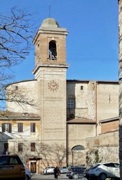
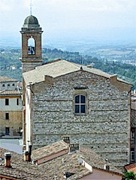
A monastery here (“monasterium Sancti Spiritus de Parione”) was listed as a possession of the Benedictine Abbazia di Santa Maria di Farneta (near Cortona) in a privilege issued by the Emperor Henry II in 1014. It had become a Benedictine nunnery by 1239. It was united with the nearby Dominican nunnery of Santa Maria delle Vergini in 1385, although the two communities kept their separate rules. Pope Boniface IX decreed that the nuns should all follow the Dominican Rule in 1391, and Pope Martin V moved them to Santa Margherita in 1428.
In 1576, Bishop Francesco Bossi gave the abandoned site to the Minims of San Francesco di Paola, who had arrived in the city two years earlier and established a temporary convent at SS Stefano e Biagio. Bishop Bossi wanted them to take over the functions of the many parish churches in the area that had been demolished in ca. 1540 to make way for the construction of the Rocca Paolina.
It was some time before the brothers could raise the finance for their new church: construction finally began in 1579 but was suspended in 1605 and resumed some seventy years later. The facade was never completed. The earlier church, which was later used as a wine cellar, survives under the apse of the present structure.
The church was consecrated by Bishop Riccardo Ferniani in 1736. Its campanile was destroyed during the French occupation of 1799. It was rebuilt and blessed in 1826, to mark the canonisation of Franciscan Minims, Gaspare da Valenza and Leonardo De Longobardis (see below).
The convent was suppressed in 1860. The church is now a parish church and the adjoining ex-convent, the entrance of which is to the left of the apse, is now a school.
Interior
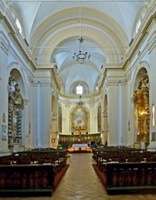
Altars in Santo Spirito (18th century)
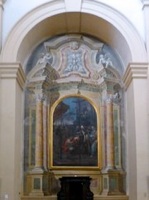
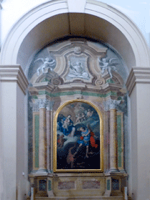
Altare di San Spiridione Altare di San Michele
The frescoed fictive architecture and sculpture above the two altars nearest the entrance is attributed to Pietro Carattoli. The designs are very similar, except that:
-
✴the central relief above the Altare di San Spiridione (on the right) depicts the Holy Spirit; while
-
✴that above the Altare di San Michele (on the left) depicts God the Father.
St Spyridon Baptises Emperor Constantius I (1731)
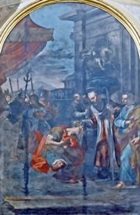
Trinity and St Francis di Sales (1788)
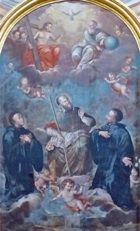
St James (18th century)
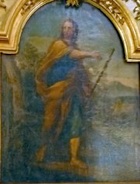
St Joseph and the Baby Jesus (ca. 1738)
Altarpieces in Apse (17th century)
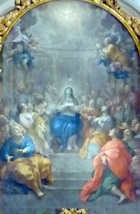
-
✴Pentecost by Lazzaro Baldi, at the centre (illustrated here); and
-
✴two altarpieces by followers of Lazzaro Baldi to the sides:
-
•St Peter administers Baptism, on the left; and
-
•St Peter administers Confirmation, on the right.
Immaculate Conception (18th century)
SS Andronicus and Athanasia (18th century)
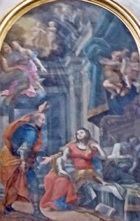
Madonna and Child with St Michael (1767)
King Louis XI greets St Francis of Paola (18th century)
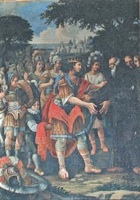
Read more:
G. Maiotti, “La Chiesa di Santo Spirito di Perugia”, (2004) Perugia
Return to Monuments of Perugia.
Return to Walk VII.
